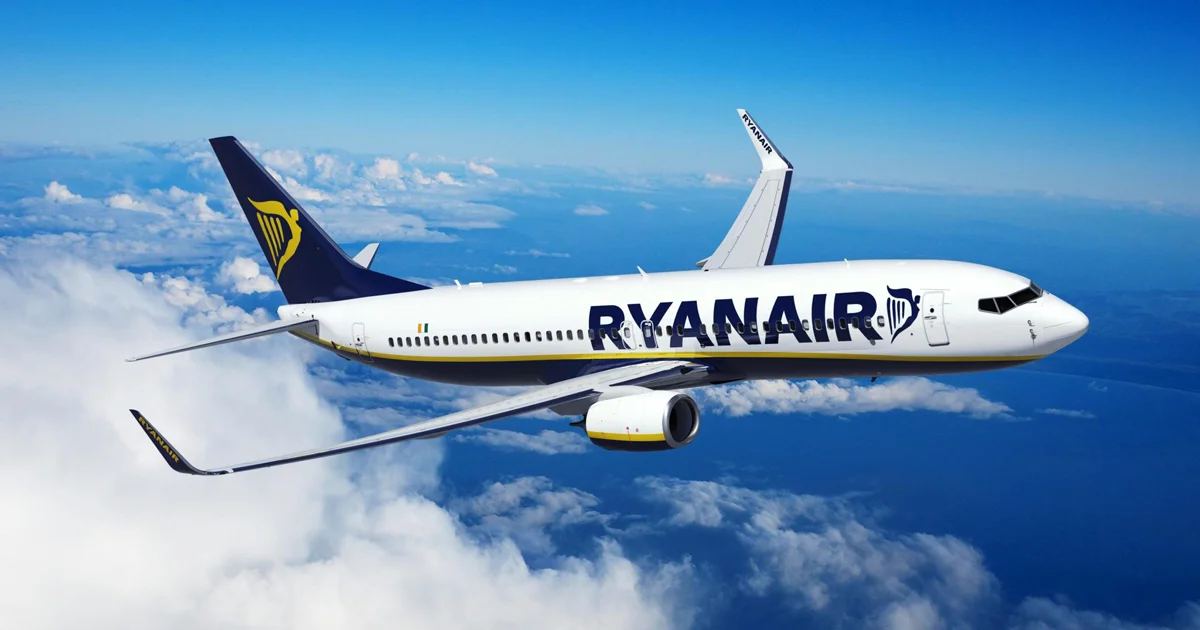Ryanair has transformed European air travel with its revolutionary ultra-low-cost business model. From modest beginnings to becoming Europe’s largest airline by passenger numbers, Ryanair continues to redefine budget travel with its no-frills approach and extensive route network across the continent.
Irish Roots: The History of Ryanair
Ryanair was founded in 1984 by the Ryan family with just a single 15-seat Embraer Bandeirante turboprop aircraft flying between Waterford, Ireland, and London Gatwick. Initially structured as a traditional airline with multiple aircraft types and complimentary in-flight services, the company struggled financially in its early years.
Everything changed in 1991 when Michael O’Leary became CEO and transformed Ryanair after studying Southwest Airlines’ successful low-cost model in the United States. O’Leary implemented radical cost-cutting measures, standardized the fleet with Boeing 737 aircraft, and focused on secondary airports to minimize fees. By 1997, Ryanair had gone public on the Dublin and NASDAQ stock exchanges.
The airline experienced explosive growth following European air transport deregulation, expanding rapidly across the continent in the early 2000s. Ryanair was at the forefront of online booking, becoming one of the first airlines to eliminate traditional paper tickets completely. Throughout the 2010s, Ryanair continued its aggressive expansion while evolving its business model with customer service improvements under its “Always Getting Better” program launched in 2014.
By the Numbers: Ryanair Stats
Ryanair’s position as Europe’s largest airline is reflected in its impressive statistics:
- Carried approximately 149 million passengers in 2019 (pre-pandemic)
- Operates around 2,400 flights daily during peak season
- Serves more than 225 destinations across 37 countries
- Maintains a fleet of roughly 500 Boeing 737 aircraft (primarily 737-800 and 737 MAX)
- Employs over 19,000 people
- Generated around €10.8 billion in annual revenue in fiscal year 2023
- Average fare of approximately €40
- Operates with industry-leading load factors consistently above 90%
Quick Facts About Ryanair
- Headquarters: Dublin, Ireland (Airside Business Park, Swords)
- IATA Code: FR
- CEO: Michael O’Leary (since 1994)
- Ticker symbol: RYA (London Stock Exchange), RYAAY (NASDAQ)
- Alliance membership: None (operates independently)
- Fleet: All-Boeing 737 aircraft (one of Europe’s youngest fleets with average age under 8 years)
- Livery: Blue and yellow with distinctive blue winglets
- Known for: Ultra-low base fares with charges for additional services
- Typical boarding process: First-come, first-served with priority boarding option
- Operates primarily from secondary and regional airports
- Rapid 25-minute aircraft turnaround times
- Famously outspoken CEO known for controversial statements and publicity stunts
Major Bases: Ryanair’s Key Operations
Ryanair operates from numerous bases across Europe, with its largest operations at:
- London Stansted Airport (STN) – Largest base
- Dublin Airport (DUB) – Home market base
- Milan Bergamo Airport (BGY)
- Brussels Charleroi Airport (CRL)
- Manchester Airport (MAN)
- Madrid Barajas Airport (MAD)
- Rome Ciampino Airport (CIA)
- Barcelona El Prat Airport (BCN)
- Palma de Mallorca Airport (PMI)
- Warsaw Modlin Airport (WMI)
Rather than operating traditional hubs, Ryanair employs a point-to-point model with multiple bases scattered across Europe.
Contact Information
For passengers requiring assistance, Ryanair offers these contact options:
- Customer Service: Available via online chat on the Ryanair website
- Reservations: Online booking at www.ryanair.com
- Phone Support: Various numbers by country, available on website
- Website: www.ryanair.com
- Mobile App: Available on iOS and Android
- Social Media: @Ryanair on Twitter, Facebook, and Instagram
For business inquiries:
- Corporate Headquarters: Ryanair Holdings plc Airside Business Park Swords, County Dublin Ireland
Looking Ahead
Ryanair continues to expand its presence across Europe while adapting its ultra-low-cost model. The airline has invested heavily in new, more fuel-efficient Boeing 737 MAX “Gamechanger” aircraft, which offer 4% more seats while reducing fuel consumption and noise emissions by 16% and 40% respectively.
The carrier has ambitious growth plans, targeting 225 million passengers annually by 2026. Ryanair’s sustainability strategy includes commitments to reduce CO2 emissions and operate with increasingly sustainable aviation fuel. The airline has also improved its digital customer experience with an enhanced mobile app and website.
Despite challenges including the COVID-19 pandemic, Brexit complications, and fluctuating fuel prices, Ryanair has demonstrated remarkable resilience. With its focus on cost leadership, operational efficiency, and expanding route network, Ryanair continues to democratize air travel across Europe – making flying accessible to millions who previously could not afford it.
Whether for weekend city breaks, holiday travelers, or visiting friends and family, Ryanair remains committed to offering the lowest fares in Europe while maintaining its position as one of the continent’s most profitable and punctual airlines – a testament to the enduring power of its disruptive business model that has fundamentally changed how Europeans travel.
Keyword: TopAirlines

